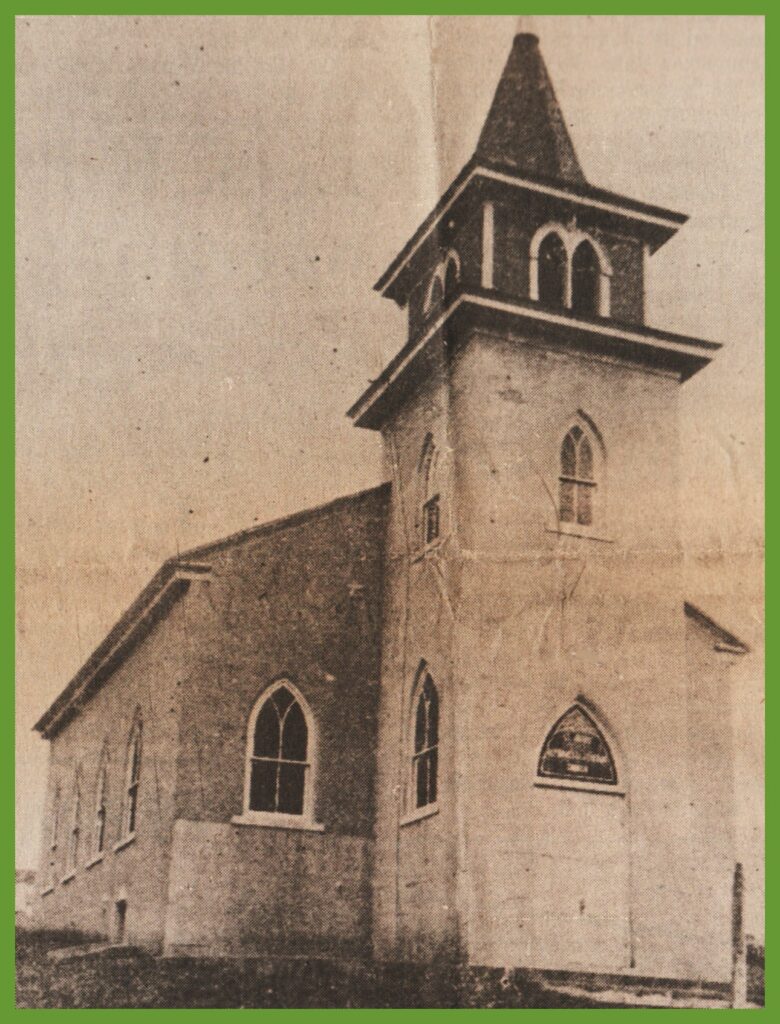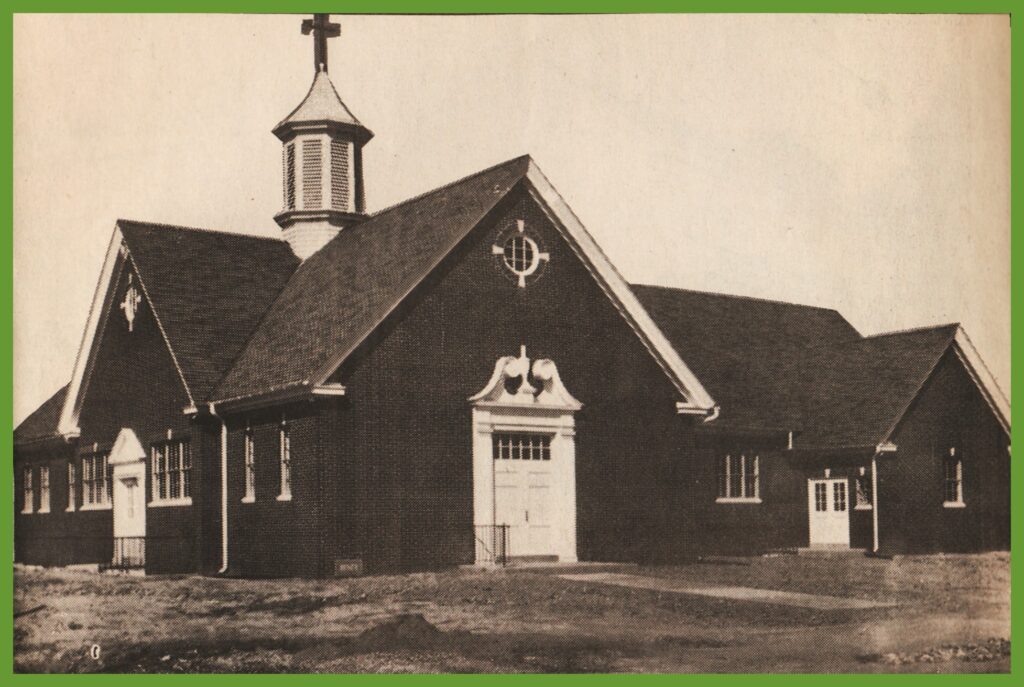Photographs of the original St. John’s Lutheran and Reformed Church (top), Pitman, Schuylkill County, Pennsylvania, also known as the “Little Brick Church,” and the church (bottom) that eventually grew out of it in Leck Kill, Northumberland County, Pennsylvania, today called Christ United Church of Christ. The second photo is from around 1953, when the new church building was dedicated.
The history of this congregation was told in the Tri-Anniversary Celebration for Christ Church, Leck Kill, in 1978. It was repeated in an article in the Citizen Standard, Valley View, July 31, 1992, with events up through 1953.
_____________________________________________________
HISTORY OF ST. JOHN’S CONGREGATION
This church, known as the “Little Brick Church,” was organized in 1853 by Reformed and Lutheran members who separated from Himmel’s Lutheran and Reformed Church near Rebuck and from St. Jacob’s Reformed Church near Pitman.
The first burial was recorded in 1853. The original building was erected that same year.
By 1886, the change consisted of St. Jacob’s, St. John’s and Salem at Rough and Ready. It was part of the East Susquehanna Classis. The Joint consistory met once a year, usually the Monday after Easter.
Extensive repairs were made to St. John’s Church in 1888 and 1889 at a cost of $344,87.
By 1890 there were five churches in he charge: St. Jacob’s, St. John’s, Salem (Herb’s), St. Paul’s in Gowen City, and St. Peter’s in West Cameron Township.
By 1897, with the addition of St. Michael’s in Klingerstown, there were six churches in the charge. The seventh, Christ Church in Helfenstein, became part of the charge in 1907.
In 1907, Mr. Jacob Seiler, who had been secretary of St. John’s Church since 1886, died and was succeeded by Mr. H. F. Diehl, who held the job of secretary of the Joint Consistory for many, many years.
The charge was without a pastor from October, 1911, until November 14, 1912. During that time [there were] four churches south of Line Mountain. The seven-church charge was evidently not working working out very well. June 25, 1912, the Joint Consistory requested that the East Susquehanna Classis constitute St. Michael’s, St. Jacob’s, St. John’s and Salem Churches as the “Line Mountain Charge.” Though it is not definitely stated, it is possible that this is when the charge’s name was changed from the “Mahanoy Charge” to the “Line Mountain Charge.”
A building committee was appointed in 1913 and St. John’s Church was renovated in the spring of 1915 at a cost of $1,995. Minutes for April 5 state: “The Holy Communion will be held later because St. John’s building is not completely finished.”
In either 1914 of 1916, the Lutheran congregation decided to withdraw from the union situation and build a church of their own just east of the the old church building. In April of 1917 the consistory of St. John’s Reformed Church met and extended to the departed Lutherans the right to use the church and cemetery. For the payment of 50 cents annually they had all the right to bury on the cemetery. The money was to be used for upkeep and repairs to the cemetery. The regulations regarding disposal of rubbish were made: it was not to be allowed in the cemetery or to be thrown over the fence. Violation of this resolution brought a fine of $1.
By 1944 the members of St. Jacob’s Church were worshipping with St. John’s congregation in Leck Kill. In November of 1949, a congregational meeting was held to vote on a proposed merger of the two congregations. By prior agreement of the two consistories, a 75 percent affirmative vote and the merger was declared defeated. In parentheses was this interesting note: “A favorable vote on such a merger had been given three years earlier, shortly after the Jacob’s Church was destroyed by fire, but action was never taken to put the merger into effect.
The Merger Is Approved
At a meeting of the two consistories on January 25, 1950, it was noted that a significant change had taken place in the attitude of many members regarding the merger. It was pointed out that St. John’s congregation, which had a usable building, will consider merging only is a church is built between the present St. John’s and the former St. Jacob’s locations. One-half acre of land would be given free by Mr. and Mrs. Wilson Brown, members of Salem Church, if a new church would be erected on it.
At a meeting of the consistories on February 5, 1950, a a disturbing fact was brought to light. A letter from Attorney Irvine Wiest pointed out that even though the Lutheran congregation has withdrawn some 30 years ago and built their own church, no settlement of the property had ever been made, and they still owned half of the property.
A month later a letter was received from the Lutheran congregation officially transferring the Lutheran interest in St. John’s property to the Reformed congregation without cost.
A vote for the merger was taken again on February 19, 1950 and this time it was a unanimous vote in favor of the merger by both congregations (St. John’s, 29 votes, and St. Jacob’s, 43). The merger became official when it was approved at the meeting of Susquehanna Synod of the Evangelical and Reformed Church at its meeting in St. John’s, Pennsylvania, on April 25 and 26, 1950. At this meeting in February it had also been decided to accept the land donated by the Browns and build a new church on it.
Thus St. John’s and St. Jacob’s were united in a spiritual and physical union. Now the next step was to choose a suitable name for the new, merged congregation. Fourteen names were submitted. By the process of elimination, this was reduced to two: Christ and Trinity. By congregational vote on March 15, 1950, the name “Christ” was chosen.
The new church was dedicated on October 18, 1953.
____________________________________________
Corrections and additional information should be added as comments to this post.

